BBC World Service
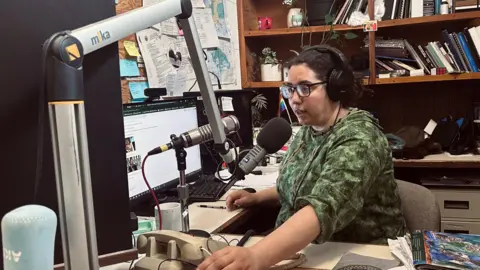 BBC
BBCA gale-force storm hit north-eastern Alaska last winter. Residents of Kotzebue, a town of about 3,000, are used to polar conditions, so Desiree Hagen still had to get to work.
“The snow was so intense you could not see in front of you,” Ms Hagen remembers. “I was walking backwards to work.”
Ms Hagen is a reporter at a public radio station, KOTZ, which airs across Kotzebue and its 12 surrounding villages.
She also happens to be the only US journalist stationed inside the Arctic Circle, so as the storm intensified, she had to get on the air.
“It’s go time, I have to report on this,” recalls Ms Hagen. “We have to make sure we know where people can go. Oh, the electric is out. Okay, now the airport is flooded.”
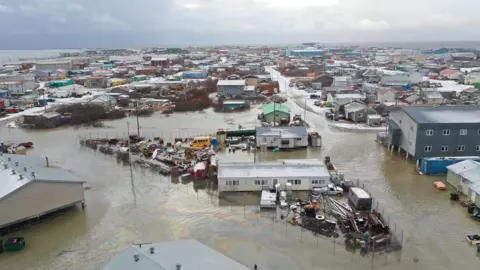
“Winter is not a joke here, it is life and death,” she tells the BBC. “As a reporter I try not to make emotional statements like, if I wasn’t here, people could die, but that is a reality.”
On the other side of the country in Washington DC, however, a historic vote could bring federal support for KOTZ to an end.
The Senate must decide by the end of the week whether to claw back $1.1bn (£800m) from the Corporation for Public Broadcasting, the body that distributes federal funding to public radio and television stations.
While the public media cuts are part of a broad spending package, which includes requests to rescind $8.3bn from the United States Agency for International Development and other foreign aid programmes, they are especially dear to President Donald Trump, who frequently accuses media of bias.
The president has now threatened to pull his support from any Republican senator who does not support the cuts.
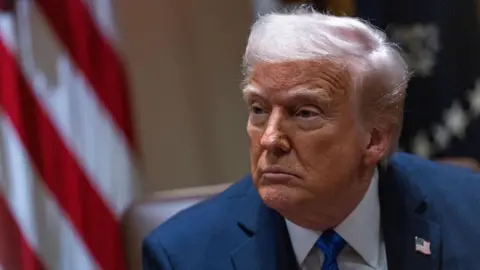 EPA
EPA“It is very important that all Republicans adhere to my Recissions Bill and, in particular, DEFUND THE CORPORATION FOR PUBLIC BROADCASTING (PBS and NPR), which is worse than CNN & MSDNC put together,” Trump posted on Truth Social Thursday night.
Executives at National Public Radio (NPR) and the Public Broadcasting System (PBS) reject accusations of bias and say they abide by all journalistic standards.
Republican voters, however, are about three times less likely than Democrats to consume or trust news coverage from either outlet, according to the Pew Research Center.
While the cuts will affect national broadcasters like NPR and PBS, more than 70% of federal funding goes to local media stations and about 45% of the stations that received funding in 2023 are in rural areas.
For half of those rural stations, federal grants made up a quarter or more of their revenue. At KOTZ in Kotzebue, public funding constitutes 41% of its income.
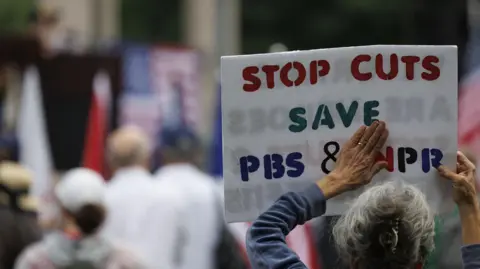 EPA
EPAThe impacts of the cuts on rural constituents have made some senators balk.
“By no means is it assured of being passed in the Senate, where many of the Republican senators represent rural states that really do benefit from the Corporation for Public Broadcasting,” Democratic congressman Dan Goldman, co-chair of the Public Broadcasting Caucus, told the BBC World Service’s Weekend programme.
Republican Senator Lisa Murkowski of Alaska has said she opposes the cuts to public media stations, warning that “what may seem like a frivolous expense to some has proven to be an invaluable resource that saves lives in Alaska”.
“Almost to a number, they’re saying that they will go under if public broadcasting funds are no longer available to them,” Murkowski told a Senate hearing last month.
Other Republican senators, including Susan Collins of Maine and Mitch McConnell of Kentucky, have expressed concern about cuts to foreign aid programmes.
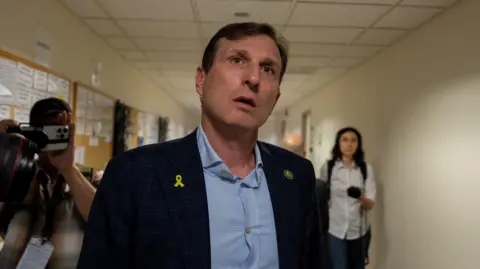 Reuters
ReutersCutting federal funding for public broadcasting has been an ambition of Republican administrations for decades and was regularly raised by President Trump during his first term.
“It is unfair to ask conservative Americans to pay for a service that mocks them, that has nothing but a derisive attitude towards them,” says Mike Gonzalez, senior fellow at the Heritage Foundation, a conservative think tank. Last year, a senior NPR editor resigned after accusing the outlet of favouring left-wing voices.
Gonzalez wrote a chapter in the Project 2025 policy blueprint calling for an end to all federal funding for public media.
“If there is a demand for local news, the market will meet it,” Mr Gonzalez says. “The idea that the taxpayer is the only surviving business model, I don’t think that is the case.”
According to Northwestern University, the number of counties in the US without a local news source has risen to 206, with 1,561 counties having just one source.
Almost 55 million Americans now live in these news deserts, three-quarters of which are predominantly rural.
Rural America strongly backed Donald Trump in November’s election, leading some to claim that the president’s own voters could be hardest hit by cuts to public media.
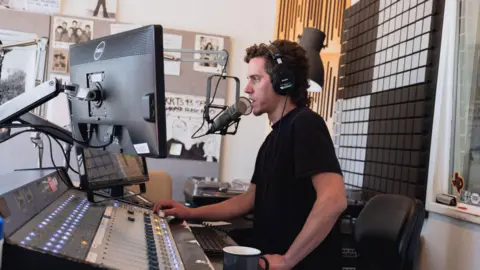
Travis Bubenik is the news director at Marfa Public Radio in rural west Texas. Nearly every county where the station airs overwhelmingly voted Republican in the last election.
Where there is anger about public media, Mr Bubenik says it is directed at the national outlets.
“All I know is that in my experience here at this local station doing local news, people talk to me, they like what we’re doing, they understand that we are local, that we live here and that we care about the region,” he says.
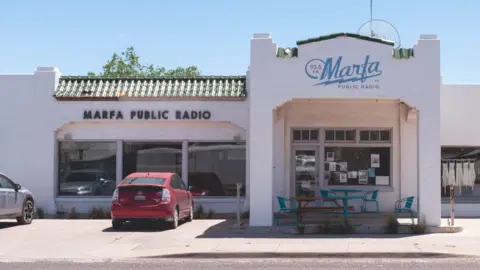
More than a third of the funding for Marfa Public Radio comes from the federal grants that are now under threat.
“It’s scary,” admits Mr Bubenik. “In the not too distant future this station might be either off the air or just not able to do the same quantity and quality of local news.”
The bill has to pass the Senate before 18 July and any changes must be approved by the House before it can make its way onto Trump’s desk. If four Republicans decide not to vote for the bill, it won’t move forward.
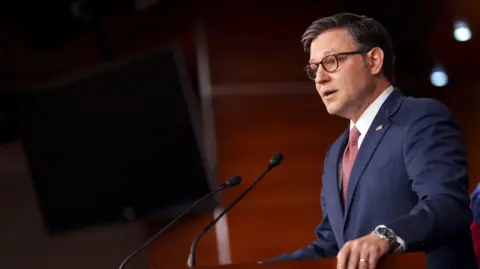 EPA
EPAWatching an iceberg float by her office window in Kotzebue, Desiree Hagen is hoping enough senators will cross the aisle. She tries not to think about the alternative.
“Even when there’s a few moments of dead air here, people think, ‘What’s wrong?” laughs Ms Hagen.
Around 90% of her audience is Inupiat, an Alaska Native community. Much of the programming is delivered by Elders in the Inupiat language.
“The station is so interwoven into the community,” Ms Hagen says. “These cuts would have ripple effects across every aspect of society.”
“It would be devastating,” she adds.
